Choose pipes for heating a private house and install them
To live in a building all year round, you must first take care of its heating, especially if the winters in the region are very cold. Sooner or later they begin to pursue thoughts about how to choose pipes for heating a private house. And the matter here is not only in the material of manufacture, but also in the selection of the diameter, which will provide the necessary throughput of the coolant.
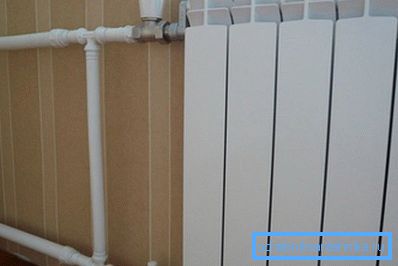
Materials for production
If earlier, when creating communication heating networks, the choice of pipes was very limited, then with the use of various types of plastic, everything changed. Products appeared on the market that can compete with traditional counterparts, and maybe even replace them completely. To understand what is better from pipes for heating a private house, it is proposed to consider each material separately.
Traditional black steel
In many apartments and houses preserved steel products, the price of which is low. They are very resistant to pressure surges and hydraulic shocks. In addition, the material is not subject to linear expansion when changing the temperature of the working environment, which occurs very often in heating systems.

Gradually, products are being replaced by more technologically advanced and effective analogues, because steel is susceptible to corrosion, and it is necessary to constantly contact with water. For this reason, the components of the system very often fail. Rust particles get into the coolant.
Corrosion Resistant Stainless Steel
The material is a alloy steel, which is not afraid of rust when used in corrosive environments. However, the cost of such products will allow heating only a small part of the population of our country. If we talk about the operation for a long period of time, the products themselves are fully justified.

Multilayer Metal-Plastic
When thinking about which pipes to use for heating a private house - plastic or metal, they usually choose the combined option. The material has a multi-layered structure, thanks to which it is possible to obtain a high-quality product that can withstand corrosion, mechanical and chemical influences.
Thermoplastic polymer - polypropylene
Particularly noteworthy are products made of polypropylene, as they are currently highly popular. Many developers, wondering about what pipes to do heating in a private house, make a choice in favor of these products.
Everything is explained by the numerous advantages of products, which are discussed below.
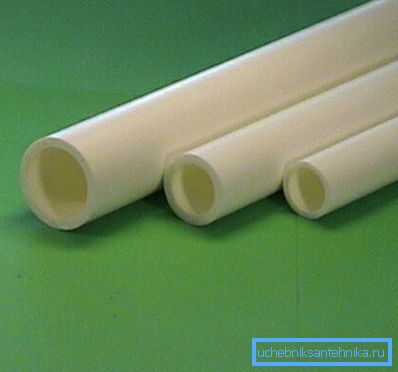
- Low cost enables the installation of heating systems to a wide range of developers.
- Long period of operation in systems with a heated working medium, it allows for a long time to refuse to carry out repairs.
- The increased resistance to influences of different type ensures efficient operation in almost any conditions.
- Simple assembly technology provides the ability to carry out the installation even beginners wizards.
- Lightweight material implies the rejection of impressive mounts and facilitates the work.
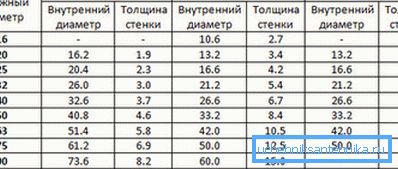
Reference! Only powerful oxidants like fuming nitric or chlorosulfonic acid can have a significant effect on polypropylene. The remaining substances do not cause significant damage.
Crosslinked polyethylene
Basically, the choice of pipes for heating a private house of this type is done when they want to create an inexpensive heating system that functions in a sparing manner. It is not recommended to lay the elements of the heating pipes in those areas where for a long time there is exposure to direct ultraviolet rays. The table will help to familiarize yourself with the technical characteristics of the material.
| Characteristic | Temperature conditions | Indicator |
| Tensile strength | +20 | 22-27 MPa |
| Moisture absorption | +100 | 0.05% |
| Density | +20 | 0.95 g / cm3 |
| Elongation at break | +20 | 350-550% |
| Impact strength | +20 | 441 kJ / cm2 |
| Elastic modulus | +20 | >550 MPa |
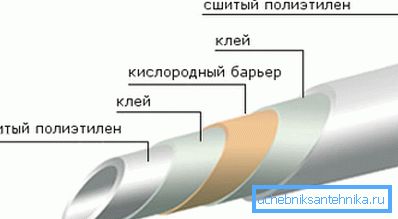
Correct diameter selection
At the design stage of the heating system, preliminary calculations should be made to determine the size of the elements, as well as the power of the main appliances.
The calculation of the diameter of pipes for heating a private house can be performed using a special formula: Qt = V *? T * K / 860.
- V is the volume of the entire room in cubic meters.
- ?t is the difference between the external and internal temperature in the winter period.
- K is the heat loss coefficient of the structure. With low thermal insulation - 2-2.9; with an average level of insulation - 1-1.9; with a high level of protection - 0.6-0.9.
- Qt is the heat output in kilowatts.
Attention! In the process of determining the temperature difference between the internal and external environment during the winter period, average values are taken which are characteristic of a specific region of residence.
Introduction to installation
To learn how to lay the heating pipes in a private house directly with your own hands, it is proposed to pay special attention to the connection of the system elements. The open version assumes the location of the component parts along the side surfaces. Hidden laying involves placing pipes inside the walls.
Docking individual parts
For metal products the most relevant threaded connections, which should be in easily accessible places. However, if necessary, welding can be carried out, allowing you to completely seal the joint. In the case of a thermal method of action, sometimes there are flows that interfere to some extent with the movement of the coolant.
Plastic counterparts are most often combined with the use of compression fittings, allowing to carry out work in a short time. Along with this method docking is actively used by the method of soldering, when with the help of a special apparatus a tight connection of pipes is performed. Sometimes chemical bonding of elements to one another takes place.
Below we consider the combination of pipelines using compression fittings, since this method does not require additional equipment and is quite simple to perform.
However, the joints should not be visible so as not to disturb the aesthetic parameters of the room.
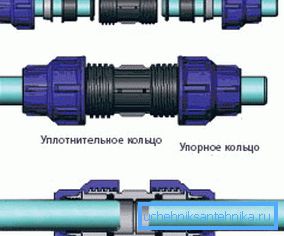
- First of all, the pipe is cut to size with a hacksaw or special tool - a pipe cutter.
- Next is the removal of burrs from the cut, as well as rounding the edges.
- The union nut is removed from the fastener, and then is put on directly on the connected element.
- The fitting is installed using a clamping ring. The pipe is inserted before the initial stop.
- Then an extra push through the seal to the special stop is performed.
- At the last stage the union nut is tightened to the limit. If the diameter does not exceed 40 mm, then a special key is not required.
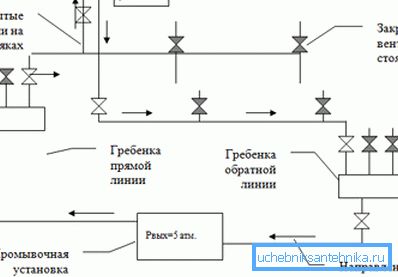
Note! The above information first of all gives an idea of how to carry out heating pipes in a private house, connecting the individual components of the system in the simplest way.
In conclusion
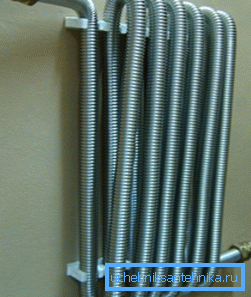
Having studied the features of the main elements of the system from different materials, you can safely make the final choice, but the products purchased must have a diameter that matches the parameters of the heated building. As for the installation process, it is not as complicated as it may seem. Special instructions regarding the topic under consideration are available on the video in this article.